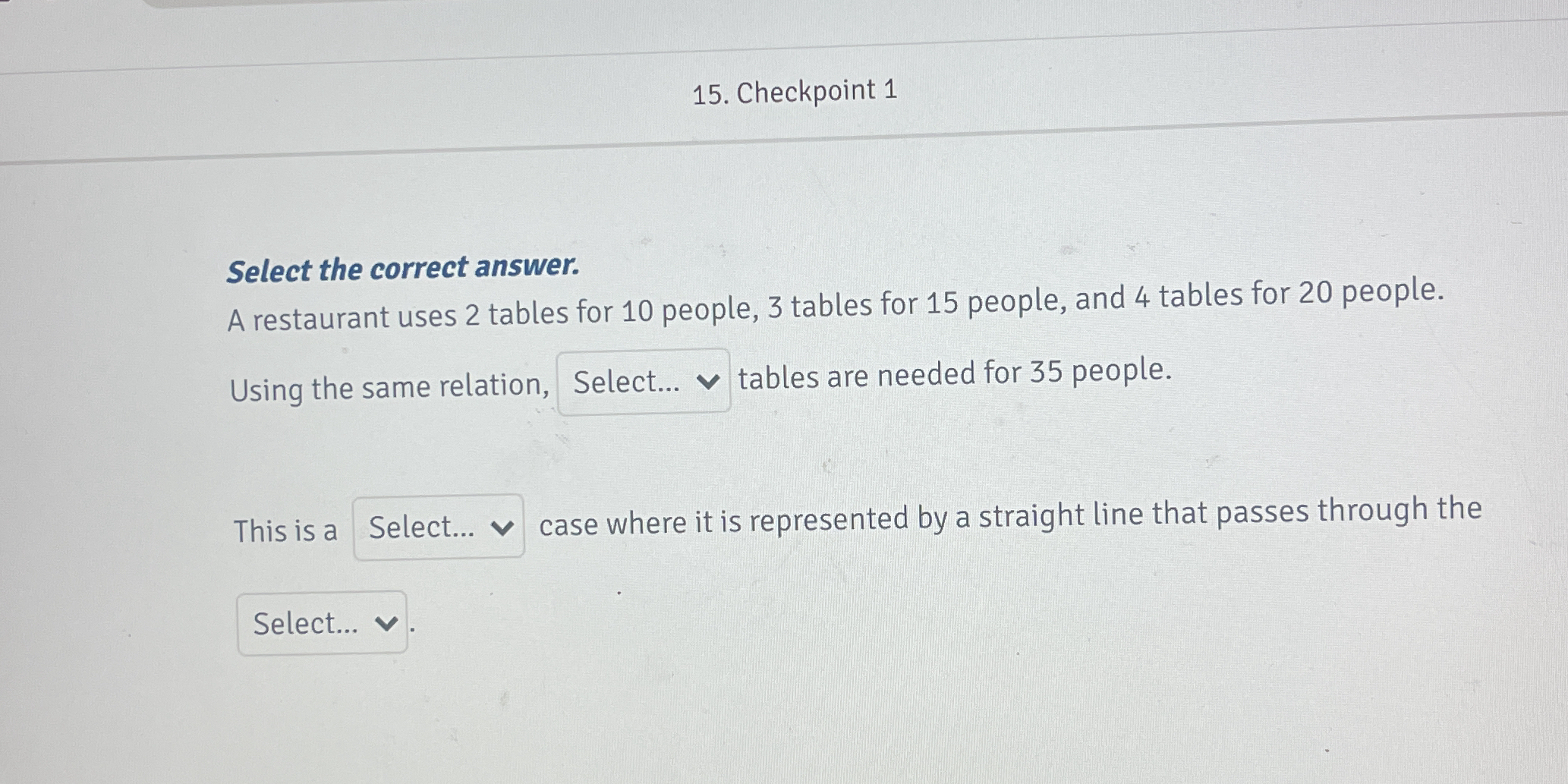A restaurant uses 2 tables for 10 people, 3 tables for 15 people, and 4 tables for 20 people. Using the same relation, how many tables are needed for 35 people? This is a case wher... A restaurant uses 2 tables for 10 people, 3 tables for 15 people, and 4 tables for 20 people. Using the same relation, how many tables are needed for 35 people? This is a case where it is represented by a straight line that passes through the origin.

Understand the Problem
The question presents a scenario where the number of tables in a restaurant is related to the number of people they accommodate. It asks how many tables are needed for 35 people based on the given information and understanding the type of case represented by this relationship.
Answer
The restaurant needs 7 tables for 35 people.
Answer for screen readers
The restaurant needs 7 tables for 35 people.
Steps to Solve
- Identify the relationship between tables and people
From the given data, we can note the relationship:
- 2 tables accommodate 10 people
- 3 tables accommodate 15 people
- 4 tables accommodate 20 people
- Determine the number of people per table
To find how many people one table can accommodate, we calculate:
-
For 2 tables: $$ \text{People per table} = \frac{10 \text{ people}}{2 \text{ tables}} = 5 \text{ people/table} $$
-
For 3 tables: $$ \text{People per table} = \frac{15 \text{ people}}{3 \text{ tables}} = 5 \text{ people/table} $$
-
For 4 tables: $$ \text{People per table} = \frac{20 \text{ people}}{4 \text{ tables}} = 5 \text{ people/table} $$
Each table accommodates 5 people.
- Calculate the number of tables needed for 35 people
Using the relationship we established, to find the number of tables needed for 35 people, we can use the formula:
$$ \text{Number of tables} = \frac{\text{Total people}}{\text{People per table}} $$
Substituting the values:
$$ \text{Number of tables} = \frac{35}{5} = 7 \text{ tables} $$
- Identify the type of case
This relationship is a linear (direct) relationship since it can be expressed by a straight line where the number of tables increases proportionally with the number of people.
The restaurant needs 7 tables for 35 people.
More Information
This problem illustrates a linear relationship. The number of tables increases proportionally with the number of people accommodated. Each table consistently accommodates 5 people, making the calculation straightforward.
Tips
- Forgetting to divide correctly: Make sure to divide the total number of people by the number of people each table can accommodate accurately.
- Overlooking the linear relationship: Recognize that this scenario is linear; each increase in people will lead to a proportional increase in tables needed.
AI-generated content may contain errors. Please verify critical information